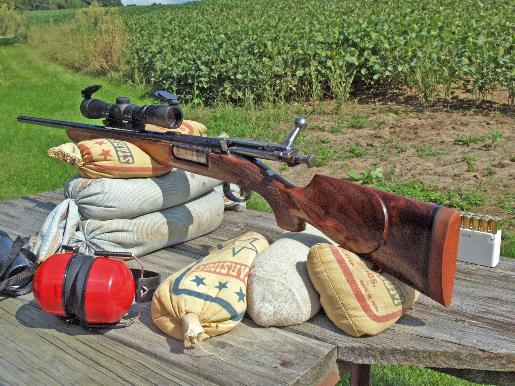Another one of my resolutions was to convert to non-toxic shot for all my hunting adventures (shotgun and rifle). I have 2 reasons for converting to non-toxic shot.
First, I hadn’t realized how much a lead bullet from a modern rifle can fragment upon impact until a retired colleague from New York shared some information with me. Check out this video comparing lead and copper bullets.
Below are copper bullets my colleague recovered from deer he has harvested.

Recovered from deer carcasses (l to r): 50 cal. Barnes MZ; 308 Barnes 150 gr; 308 Barnes 150 gr; and 20-gauge Barnes slug.
The deformed .308 Barnes on the left was recovered weighing 130.6 grains from a deer shot in the shoulder and the bullet lodged in the pelvis. The .308 Barnes on the right weighed 149.1 grains upon recovery – a loss of 0.9 grains.
Research has shown that lead fragments can be found many inches from the entry wound. One study looked at lead in 30 deer killed by hunters using lead-core, copper-jacketed bullets.
They first radio-graphed the field-dressed carcasses and found 15-409 metal fragments per deer with widespread dispersion from the bullet wound. The distance between fragments averaged over 9” with the largest distance at almost 18”.
The deer were processed into steaks and ground meat at 22 different commercial facilities. At least one metal fragment was found in 32% of 234 packages of ground meat. Of 16 deer carcasses with metal fragments near the spine, 8% of loin steak packages from those deer contained metal fragments.
When the processed meat from these deer was fed to pigs, the average lead level in their blood was 3 times greater than pigs fed a control diet. The authors concluded, “The observed elevations in blood lead concentrations, while not considered overtly toxic, would nevertheless contribute to cumulative lead burdens, and would be additive with further meals of contaminated venison.”
My second reason for converting also was health-related. Lead poisoning from secondary sources is a problem for wildlife. Bald eagles are dying from ingesting lead. California Condors, an endangered species, must be removed from the wild, given chelation treatments to remove the lead from their bodies, and then released back into the wild.
Peppering our environment with a known toxin does not make hunters look good. Hunters are credited with sharing venison with people in need – how will it look when the general public realizes we are likely providing meat contaminated with lead?
Lead poisoning of wildlife is no longer much of a scientific issue. We know the causes, we know the adverse effects, and we know the solution. Rather, it is a social issue. How will hunters respond?

A greater prairie chicken harvested in South Dakota, September 2018 with a Berretta Silver Pigeon 28 ga using non-toxic shot.
My own blood levels are 4.6 µg/dl, which are acceptable (0-24.9 µg/dl is acceptable for adults – children are a different matter). However, I’m not going to add more lead if I don’t have to. And I’m no longer going to serve lead at the dinner table when I share my venison with family and friends.
I’m also looking forward to trying different loads to see if I can improve on the accuracy of my .30-40 Krag. And most importantly, I’m looking forward to November.
-Duane Diefenbach
If you would like to receive email alerts of new blog posts, subscribe here.
And Follow us on Twitter @WTDresearch
